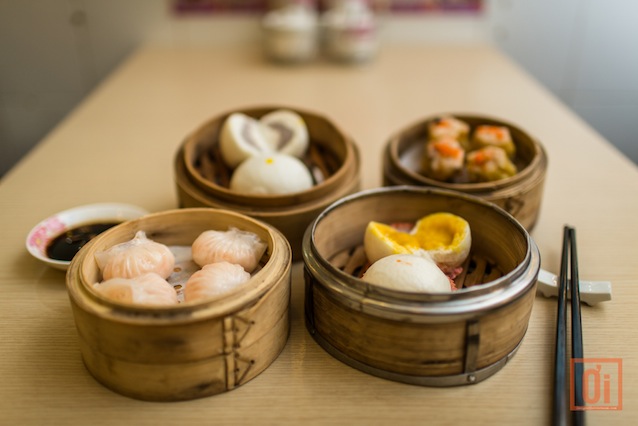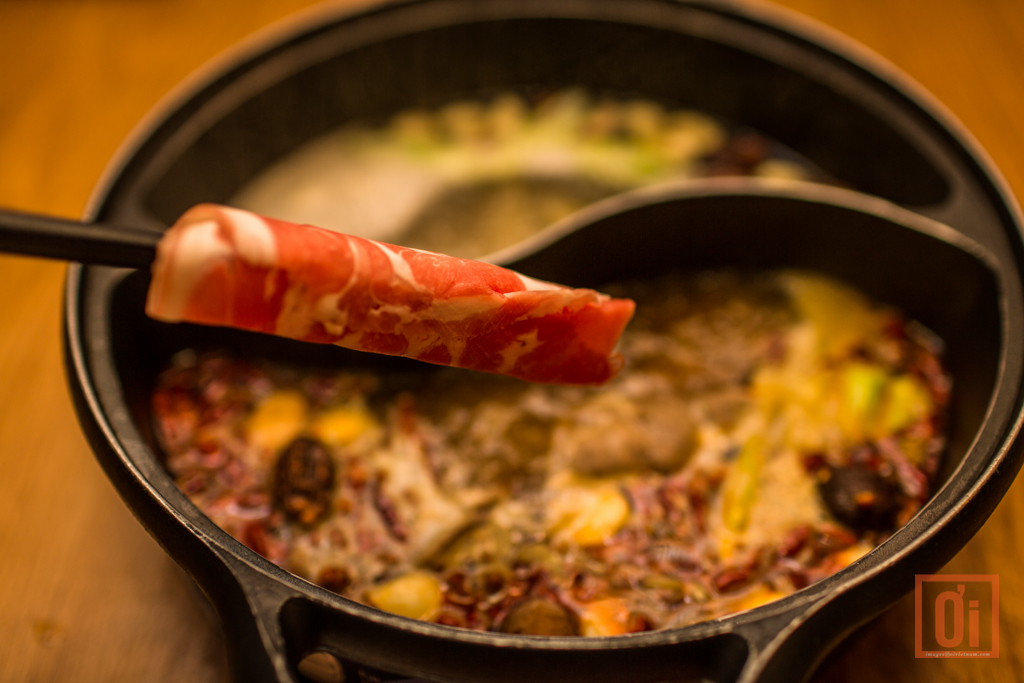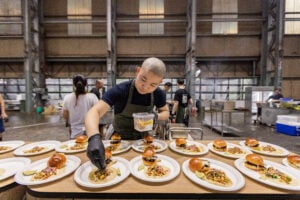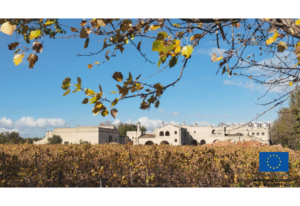There’s a Vietnamese saying that “happiness is eating Chinese food, having a Japanese wife and living in a Western house.” Our insider tips will start you on your journey to eternal bliss…
IN CHO LON, the air is alive with the smell of suckling pig, steaming bowls of aromatic soups and chrysanthemum tea. Whether there are throngs of people queuing for Peking duck from a roadside BBQ joint or vast restaurants of diners enjoying long lazy lunches over dim sum and tea at some of the city’s most prestigious eateries, Chinese food is firmly on the menu in this part of Ho Chi Minh City.
The Chinese have had a presence in Vietnam for two millennia, and their culinary traditions and techniques have made an indelible mark on the foodscape here. From a shared passion for noodles, a reverence for soup (some go as far as to say local dishes such as pho were influenced by Chinese precursors) or even the use of chopsticks, cross-border culinary exchange has been continuous throughout the centuries.
And perhaps the most iconic dish in the Chinese culinary repertoire, the poster boy of Chinese food, is Peking duck which can be seen hanging glistening and glorious in Chinese restaurant windows around the world. In Cho Lon, a fantastic SinoVietnamese take on Peking duck can be found on the intersection of Phan Van Tri and Bui Huu Nghia where it’s served roadside in a banh mi. But for the real deal, the Royal Garden at the top of Hung Vuong Plaza just around the corner, has hired Chinese BBQ chef So Kwok Wing to make sure it’s done properly.
Royal Garden has been open since 2008, serving up high-end Cantonese cuisine to local Chinese and Taiwanese businessmen and entrepreneurs enjoying Vietnam’s growing economy. Although Peking duck was born in Nanjing, it found favor among the imperial courts of the Ming Dynasty and has been the centerpiece of Chinese cuisine ever since. As the famed bird is proudly wheeled to our table, chef So Kwok Wing explains that the only way to eat Peking duck is to leave the meat and only eat the skin. This is because of the implicit understanding the Chinese have for balance – the skin, so intensely rich, should be eaten only with the cooling properties of cucumber and spring onion and the sweet, sticky hoisin or plum sauce to complete the balance. The meat is left and used in other dishes.
This respect for balance plays to the heart of the Chinese culinary tradition – to understand Chinese food, you have to understand Chinese medicine, for “he who takes medicine and neglects diet wastes the skill of the physician.” Long before we discovered superfoods the Chinese understood the connection between what we eat and how we feel.
Every meal pays homage to this understanding – from the simplest of broths to more complex dishes such as the head chef’s signature dish of crab rice with lotus leaf. Chinese born Yu Kam Chuen spent months perfecting the flavors and balance – the sweet meat of the crab, the five-spice scented rice, studded with dried shrimps and stir fried kai lan (VND480,000). And the result is pretty spectacular.
Off the Menu
Back down from the air-conditioned heights of Royal Garden, but still with feasting food on the menu, is Tan Nha, hidden away on the first floor on the corner of 100 Tran Tuan Khai. Run by the Tang family, this unassuming little restaurant has been serving authentic Chinese food from Guangdong Province since 1975. Much of what they serve is not on the menu – it is requests from locals who know Chinese chef Sang, who has been working there since it opened.
On the quiet Tuesday I was there an elderly lady and her daughter were sitting down to a casual platter of pigeon followed by a giant crab. Another favorite is the suckling pig, which has to be ordered in advance and is handpicked by the team from a supplier in Binh Duong who specializes in grassfed suckling pigs. Tri Tang, whose parents own the restaurant, tells me that suckling pig was traditionally reserved for high days and holidays, and is one of the few items in the litany of Chinese dishes that’s not eaten for its medicinal qualities but for “pure unadulterated indulgence.” Other specialties at Tan-Nha, (that is if you know what to ask for), include crabmeat and pig brain soup, crab in tamarind sauce, and roast pigeon.
Food of Kings
If you really want to go to town, Ngan Dinh on the sixth floor of the five-star Windsor Plaza Hotel has a menu that would make emperors sing (and wildlife lovers cry). The gilt lobby is lined with aquariums, home to all manner of marine life – mantis prawns, poisonous rockfish, and a rather sad looking giant grouper. And in the cabinets opposite sit dried shark fins, abalone, sea cucumbers and fish maw – the swim bladder that help keep fish afloat. Here, Chinese dedication to good health whatever the cost, slips gluttonously into flamboyance and extravagance. In case there was any doubt, charismatic head chef Andy Xian, confirmed that “this is the food of kings… it’s only natural that a rich country like China, should acquire a taste for rich foods.”
But this is not everyday food, the food that feeds China’s vast population. Contrary to popular belief, the majority of authentic Chinese food is simple and virtuous – baked fish, springy hand-rolled noodles, silken tofu and hot steamed dumplings are what the Chinese eat at home. In Hainan, an island off the southern tip of China, they make a dish known as Hainan chicken – simple, wholesome and healthy, and replicated all over Southeast Asia.
Dong Nguyen on Nguyen Trai has been serving this Hainanese classic since 1946 when the current owners’ parents emigrated to Vietnam from Hainan. Walking into the low-key open-fronted shop you’re greeted with a distinct waft of chicken stock brewing and rice cooking. The dish – chunks of pure, white braised chicken with a sliver of yellow skin served over rice – is disarming in its simplicity but as comforting and delicious as a good Jewish mum’s chicken soup.
Vi, who now runs the shop with her husband, says the exact recipe is a closely guarded secret, but traditional recipes involve braising a castrated (thus plumper) rooster in a master stock, and cooking the rice first by frying in the said rooster’s fat before cooking it in chicken stock. In Hainan it would be served with a soy and ginger dipping sauce, but at Dong Nguyen it is accompanied with a Vietnamese style sauce of chili, ginger and garlic – a legacy from when the shop was closed post reunification and the family decided to reopen with a more Vietnamese orientated menu. Alongside chicken, the place serves a roll call of soups from pig brain to black-skinned Silkie chicken, and lotus root and pork. All these have found their way onto the menu thanks to the Chinese belief that soup quells the inner heat, and restores the body’s energy to balance.
Something for everyone
For the ultimate Chinese master class in balance, it’s got to be yum cha, or dim sum and tea. The practice originated in southern China, was perfected in Hong Kong, and is now alive and well anywhere with a Cantonese-speaking population. A Viet Kieu, Ben Chow has recently opened an excellent diner-style dim sum restaurant on Huynh Man Dat. Having lived in Hong Kong for 20 years, he missed proper dim sum so he’s hired a top Canton dim sum chef to start his chain of restaurants.
Ben explains that for the full experience you need variety, and “in variety there is balance” – something steamed, something baked, something fried, something chewy, something crispy, something savory and finally something sweet. All the lovingly hand-shaped morsels we tried were superb – the generous chunks of prawn in the ha cao tom (VND45,000), the soft sweet taro in the banh bao khoai mon (VND36,000), and the juicy pork and prawn of the xiu mai tom thit (VND45,000). But the jewel in the crown was the banh bao kim sa (VND36,000) – a pale sweet steamed bun filled with a soft duck-egg custard. In its bamboo basket, it’s the perfect imitation of a duck egg in its nest.
“It took the head chef weeks of practice and I wouldn’t let him put it on the menu until he perfected it. Eventually the trainee chef mastered it first, so he’s now in charge of them,” says Ben.
Across Cho Lon a new breed of ‘Chinese’ restaurants are opening – Mongolian hotpots are the new plat du jour. Motivated by the success of other restaurants, the Golden Gate Group has recently opened two branches of Ba Con Cuu catering to the Vietnamese’s growing taste for Chinese inspired food. Manager My says “it took a while for people to get used to the flavor of lamb, but now they can’t get enough!” The lamb-based menu is a modern take on the staple diet of Mongolian horsemen. Not able to carry proper cooking equipment while traveling across the high mountain steppes, they rigged their shields over campfires to sear meat and nestled upturned helmets in the embers to simmer soup. In the trendy surrounds of Ba Con Cuu, fragrant hotpots of Mongolian spiced stock have replaced the helmets, and groups of young Vietnamese dip lamb into the steaming pot to cook (prices from VND149,000 per hotpot).
In immigrant communities, food has always been a vital part of life and Cho Lon, is no exception. So it’s little wonder that the cultural melting pot is championing Saigon’s food scene. Whether it’s traditional dim sum, high-end Sino-Vietnamese hybrids or hip Mongolian hotpots, in Cho Lon there’s always a feast happening.
RESTAURANTS
Royal Garden
6th Floor, Hung Vuong Plaza, 126 Hung Vuong, D5
Ngan Dinh
5th Floor, Windsor Plaza Hotel, 18 An Duong Vuong, D5
Tan Nha
First Floor, 100 Tran Tuan Khai, D5
Dong Nguyen
801 Nguyen Trai, D5
Vua Dau Bep
38 Huynh Man Dat, D5
Ba Con Cuu
48 Nguyen Chi Thanh, D10
106a Cao Thang, D3













